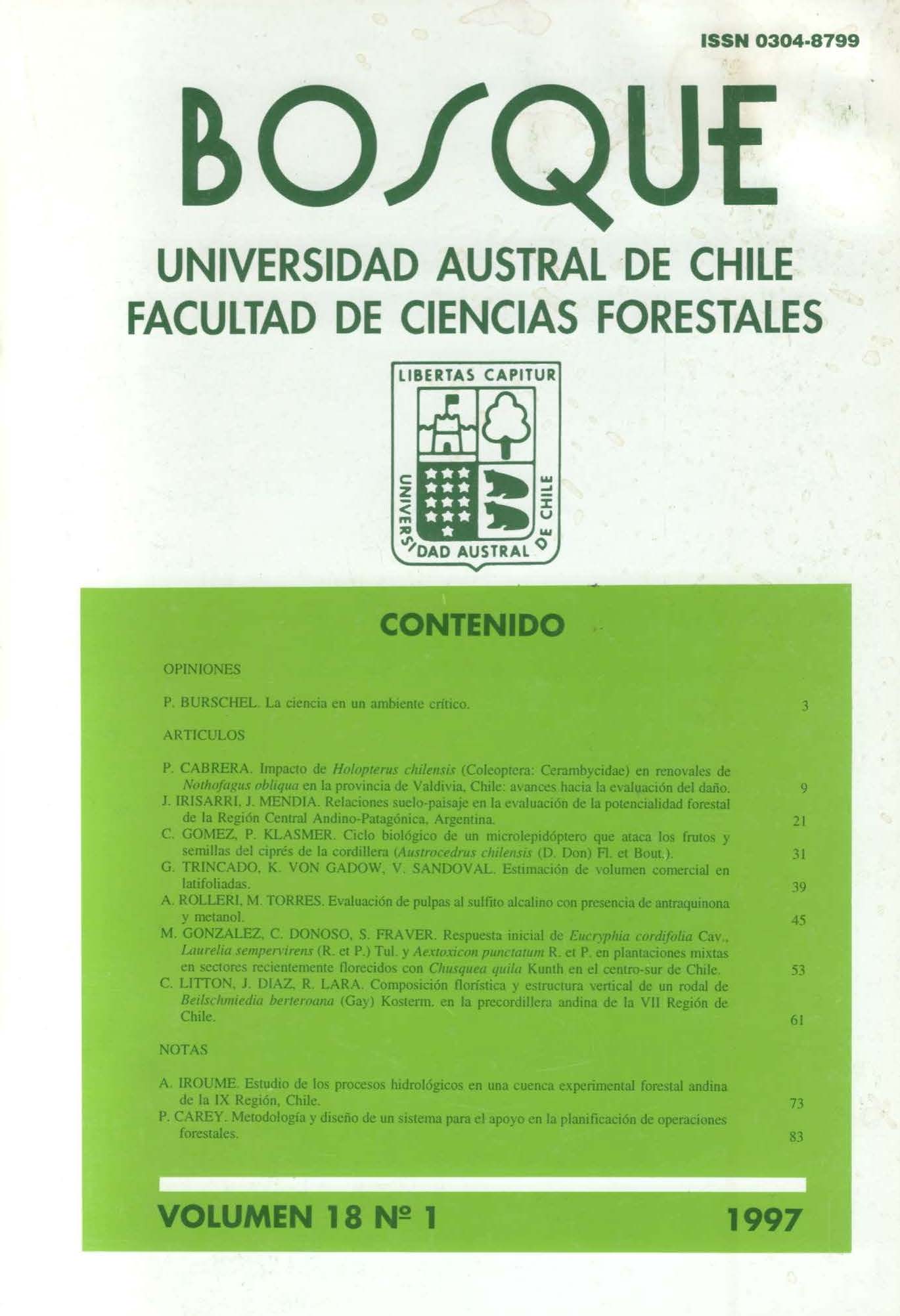Mixed plantations of Eucryphia cordifolia Cav., Laurelia sempervirens R. et P. Tul. and Aextoxicon punctatum R. et P. in areas where Chusquea quila had recently flowered
Main Article Content
Abstract
After anthropogenic disturbances, the establishment and development of temperate broad-leaved forests is often inhibited by competing vegetation such as the genus Chusquea. The recent synchronous flowering and subsequent death of quila (Chusquea quila) in south-central Chile has opened up extensive areas that may now be used for productive forestry through the planting of native trees.
Although Ulmo (Eucryphia cordifolia), Laurel (Laurelia sempervirens), and Olivillo (Aextoxicon punctatum) are important components of these temperate forests, studies of their growth and survival are scarce.
In 1994 the three species were planted together in large forest clearings that had previously been dominated by dense stands of quila, which had died following its synchronous flowering of 1992 and 93. At the time of planting, quila was partially decomposed.
Growth, survival, and general condition of the three species were recorded for two growing seasons, starting in 1994. Results indicate that Ulmo grew much faster than the other two species, although it had the lowest survival rate. Laurel and Olivillo were less damaged and, in general, in much better condition than Ulmo.

